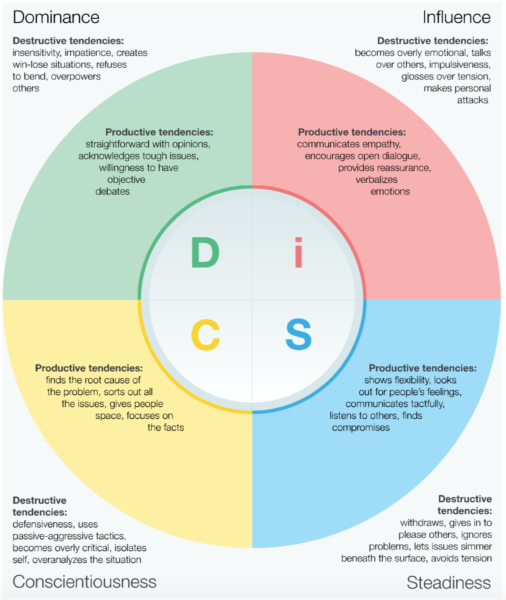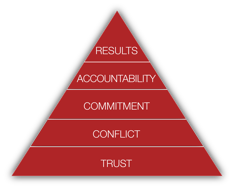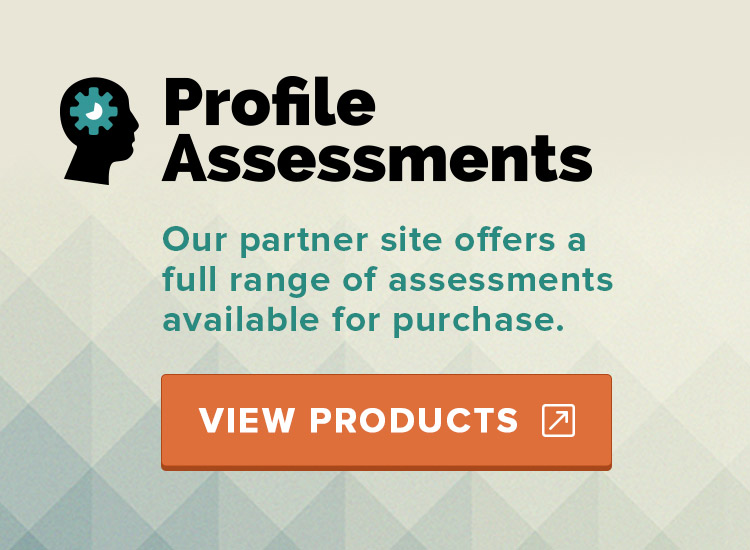5 Strategies to Manage Conflict in the Workplace
Think about workplace conflict. What comes to mind? Arguing? Back-stabbing? Compromise? Finding solutions? Do you think of gossiping and hurt feelings? Do team members take ownership for mistakes?
Whatever you think of, conflict really comes down to a difference of opinions involving strong emotions. It can range from quick, explosive disputes to subtle, long-term issues that eat away at team members. The common denominator is that conflict triggers different behaviors in each of us, from destructive to productive responses. Sure, it can be very uncomfortable, but it is a natural and inevitable part of relationships.
Try these five strategies to help move from destructive conflict into productive and healthy debates.
Acknowledge Conflict
The first and most important strategy is to embrace conflict. How many times have you been in a situation where there was unproductive conflict and everyone pretended nothing happened? Then what? Team members leave the meeting and immediately gossiping begins. People take sides, talk behind the scenes, bad feelings fester, and nothing gets resolved.
It takes courage to stand up to conflict in a healthy and productive way. If the immediate situation is not the place to address the conflict, then be sure to set up a specific time to talk off-line. You may not be comfortable with conflict, but with time and practice, you will find that heading conflict straight on is way more productive than doing nothing at all. Cut it off at the pass and handle it!
Take a Look at Yourself & How You Handle Conflict
Different people have different ways of handling conflict. Much of it depends on personal communication styles. Ask yourself three questions:
- How do I respond to conflict when I’m not at my best or destructive?
- What does it look like when I am able to respond to conflict productively?
- Thinking about these different scenarios, what triggers may have caused you to react one way or another?
The graphic below from Wiley’s DiSC Everything Productive Conflict profile provides a snapshot into how different communication styles may react to conflict. The bottom line is that ‘how we feel’ can impact how we respond. When we are well rested and feel in control of our environment, we have the ability to be more consciously aware of automatic thoughts that may derail us into unproductive behaviors. STOP! Don’t let those thoughts springboard you into a bad situation. Instead – take a deep breath, pause, and look for a response that promotes healthy conversation versus divisive behaviors.

Recognize Automatic Thoughts During Conflict
![]() Everyone has automatic thoughts in any given situation. The key is to recognize these thoughts and understand how they might drive your behavior in a conflict situation. Think about a past conflict that resulted in an unproductive response. Recognize the conversation you might have had going on inside your head. Do any of these thoughts strike a chord?
Everyone has automatic thoughts in any given situation. The key is to recognize these thoughts and understand how they might drive your behavior in a conflict situation. Think about a past conflict that resulted in an unproductive response. Recognize the conversation you might have had going on inside your head. Do any of these thoughts strike a chord?
- Here we go again. Why can’t they ever let it go?
- You’re showing me absolutely no respect.
- If you would listen maybe you could understand.
- You are being totally unreasonable.
- You have no idea what you’re talking about.
- If you think I’m going to back down – guess again.
- Isn’t it obvious where we need to go with this?
Think about how it works. You’ve got these thoughts going on in your head and then you can feel your blood pressure rising. You’re heating up and your body is tense. All you want to do is keep to your agenda and move on.
Once you recognize these thoughts, you have a better chance of reframing the situation and your response. What happens when we focus on ‘us versus them’ thoughts, is that we are not looking at ways to move through the situation. Ok, so it sounds like the Win-Win strategy but this isn’t necessarily what needs to be the outcome. Instead, the strategy is to reframe your thoughts so you can respond productively.
If your head is saying: “You have no idea what you’re talking about”, try responding with “I hear what you’re saying but I’m not exactly following. Can you help me understand where you are coming from?” Seek to understand. The other person still may have no idea what they are talking about but now you have more information to handle this in a way that clarifies what is really happening.
Gain an Understanding of What Drains Your Energy During Conflict
 Take a look at what aspects of conflict are stressful for you? If you tend to focus on the end result and accomplishing your goals, you might find it frustrating when your authority is challenged, or your goals are in jeopardy. Maybe you become irritated when you have to slow down and deal with team member misunderstandings or hypersensitivity?
Take a look at what aspects of conflict are stressful for you? If you tend to focus on the end result and accomplishing your goals, you might find it frustrating when your authority is challenged, or your goals are in jeopardy. Maybe you become irritated when you have to slow down and deal with team member misunderstandings or hypersensitivity?
Tap into what is going on during a conflict situation. What personal values are being compromised and is this the cause of stress? Once you recognize what is driving your thoughts, then you are able to ‘reframe’. Get out of your own way and consider how to manage conflict in a way that takes into account different communication styles and values. Seek a collaborative approach to moving through the process.
Establish Dialogue with the Team to Better Understand Conflict
Has anyone ever asked how conflict impacts you? The answer is likely no. The subject of conflict is typically avoided.  Conflict happens on all teams at some point and across organizations. But it is often left unaddressed to fester into offline grumbling which leads nowhere.
Conflict happens on all teams at some point and across organizations. But it is often left unaddressed to fester into offline grumbling which leads nowhere.
The following questions from Wiley’s Five Behaviors of a Cohesive Team profile helps teams to better understand how conflict impacts overall team performance.
On a scale of 1-5, conduct a blind survey with your team.
1=Almost Never
2= Rarely
3=Sometimes
4=Usually
5=Almost Always
- Team members voice their opinions even at the risk of causing disagreement.
- Team members solicit one another’s opinions during meetings.
- When conflict occurs, the team confronts and deals with the issue before moving to another subject.
- During team meetings, the most important—and difficult – issues are discussed.
The key is to sit the team down together and engage in an authentic dialogue about conflict. Seek to gain understanding of how different team members respond to conflict. Some may have no problem with it while others would rather crawl under the table than engage in conflict. Either way, the important point is to recognize what works and what doesn’t for individuals on the team. Come to an understanding of what is acceptable to the team regarding conflict behaviors. Lastly, evaluate the team. How do team members really feel about conflict when addressing these questions.
To learn more about how to manage conflict productively in the workplace and to gain insight into how your team feels about conflict within the team, take a look at these two essential conflict tools for individuals and teams.
